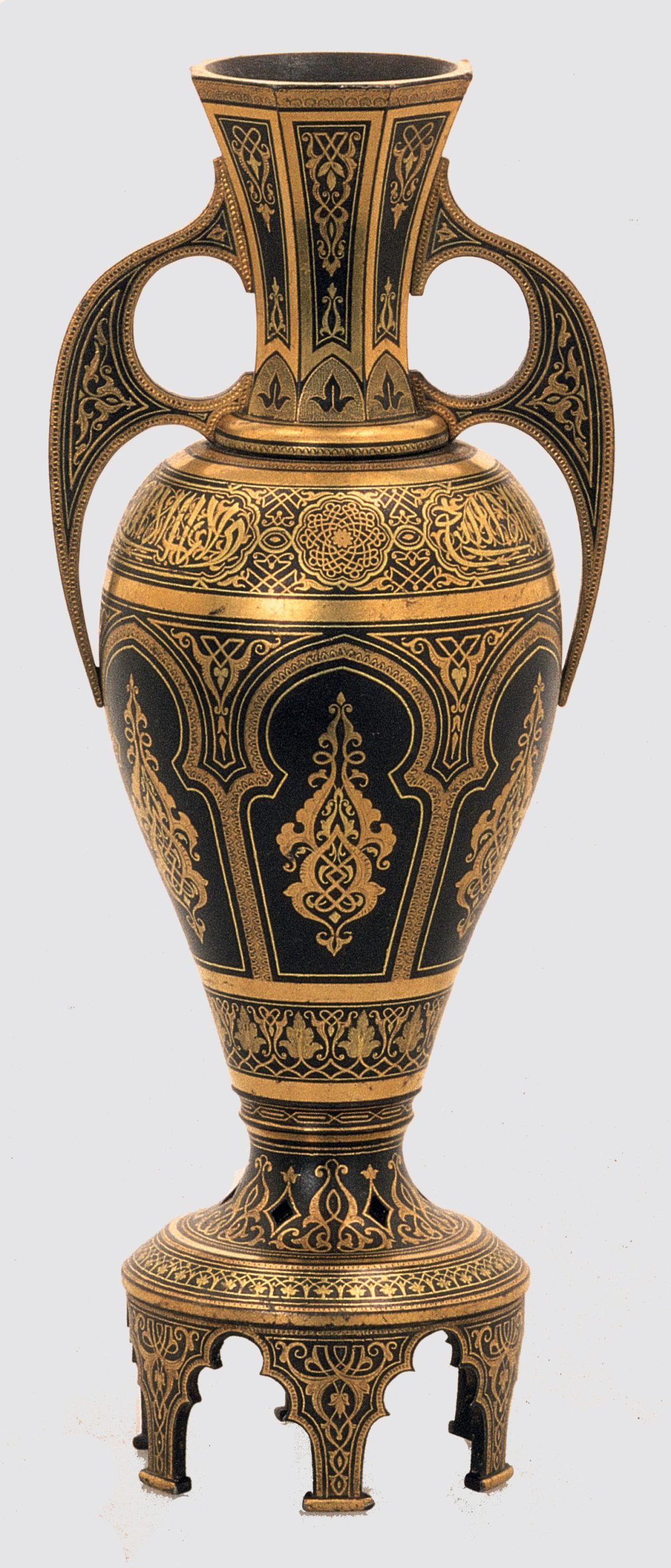 Print Page
Print Page
 Print Page
Print Page
Location: Spain, Eibar
Materials: iron, gold damascene
Dimensions: height 23.8 cm
Accession Number: ZUL 100
Other Notes:
This iron urn is assembled from five pieces: neck, body, base, and two handles. The round sections appear to have been lathe-turned. The applied ornament is in two colours of gold wire and leaf.
The inspiration for this diminutive vase is the well-known series of so-called Alhambra vases of the Nasirid period already copied by Plácido for Alfred Morrison (see ZUL 104 and ZUL 94). The octagonal neck, not seen on Plácido’s Morrison copies, imitates the fourteenth-century originals. The body is divided into three decorative bands, the upper containing arabesques and cartouches with the Nasirid motto. The broad central band contains a series of six slightly pointed horseshoe arches framing symmetrical palmettes. The lower is similarly decorated with a series of broad vertical leaves and arabesques. The base has six feet divided by lobed arches and is decorated in like manner. The two wing-like handles are only loosely inspired by the originals.
In the 1890s Plácido constructed a monumental vase of eclectic style with cloisonné panels alternating with pierced, gothic style handles having rococo shells and lapis lazuli inlays. This urn, still in possession of the Zuloaga family in Zumaia, has a faceted neck with piercings, and each of the body panels is pierced in baroque designs around a central plaque with the Nasirid motto. The Zumaia vase is a unique work for Plácido, and one might imagine a very tenuous influence that it may have had over the small vase shown here.
Bibliography:
J. D. Lavin (ed.), The Art and Tradition of the Zuloagas: Spanish Damascene from the Khalili Collection, Oxford 1997, cat. 40, p. 138.
